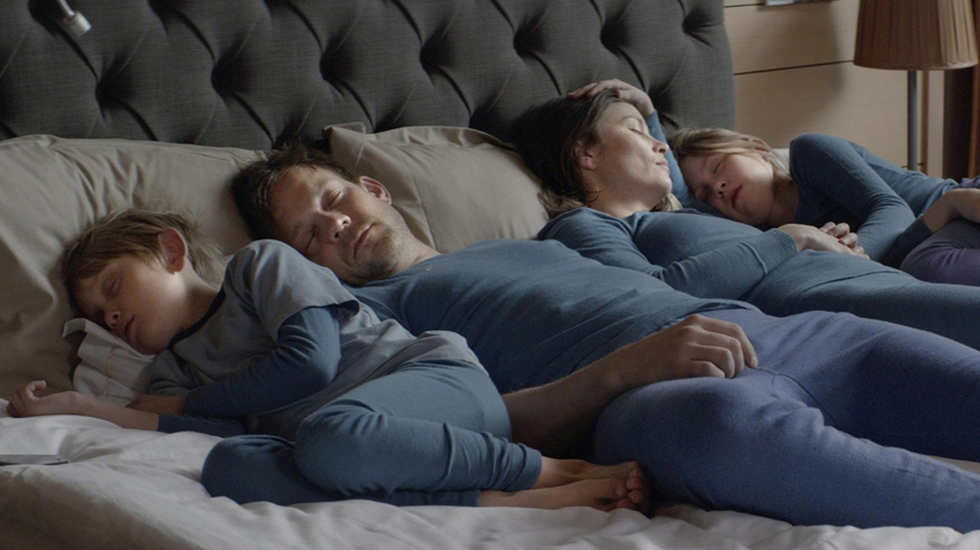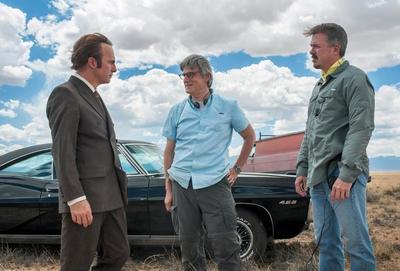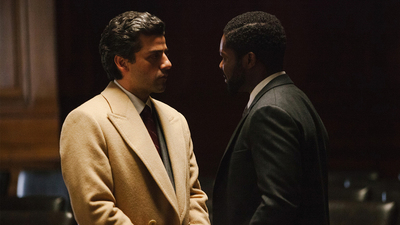
BY ZACHARY WIGON |
Under The Hood: 'Force Majeure' and The Beauty of Simplicity
Ruben Ostlund's latest is a great example of how simplicity is often the best organizing principle for narrative cinema.

There are certainly plenty of pleasures to be had in films with complex, intricate narrative webs—the audience racing to keep step with the characters, taking in new information, sorting out what's true from what's false, and so on. But ultimately, the ceiling on the amount of narrative information a film can provide is very low, relative to novels, TV shows, or even plays, where the audience focuses more closely on the dialogue than it does in a film. Films are works of art that convey their information primarily visually, which means that information is conveyed at a slower rate than it is in a work from one of the aforementioned mediums. Therefore, films can only deal with so much plot before they begin to spread themselves really thin—as has often been remarked, films are much closer, structurally, to short stories than to novels; the novel is the realm of a TV series.
Staying simple doesn't just make the filmmaking easier, but it also gives the audience the opportunity to be smarter as well.
So it was with great pleasure that I watched the Swedish Oscar entry this weekend, Ruben Ostlund's Force Majeure. The film's entire narrative is essentially nothing but a series of escalating reactions to one event—and then reactions to the reactions, and reactions to those reactions, and reactions of supporting characters in addition to the main characters. The event? A Swedish family vacationing in the French Alps is having a lovely time, until, during their lunch on the second day of the trip, a controlled avalanche approaches the outdoor cafe they're seated at. Initially enamored with its beauty, the family—Tomas, Ebba, and their two young children—becomes terrified once it appears that the avalanche is not controlled at all, but rather, entirely genuine. In a panic, Tomas grabs his gloves, cell phone and runs away, leaving his wife and two kids alone, to die. Unfortunately for Tomas, the avalanche turns out to be controlled after all, and stops well short of the cafe—leading to a series of increasingly awkward conversations in which Tomas and Ebba grapple with the ramifications of what has occurred.
By the end of the film, the narrative has hardly expanded far beyond this central event—basically every scene in the film is tied to it in some way, and the only subplot—involving friends of the couple who come to the same resort—comes to revolve around the event in its own way. By keeping his narrative focus so restricted, Ostlund is able to do something many overly ambitious filmmakers, especially younger ones, are often incapable of realizing - but are wont of recognizing—simple is good!
Films can only deal with so much plot before they begin to spread themselves really thin—films are much closer, structurally, to short stories than to novels; the novel is the realm of a TV series.
With a simple story, the filmmaker is able to drill deep into the subject matter without having to keep too many narrative balls in the air. With such a simple narrative as this one, events are able to progress at a slow pace, so the audience can stay on top of everything occurring, and thus can read into the material in a particularly intelligent fashion. Staying simple doesn't just make the filmmaking easier, but it also gives the audience the opportunity to be smarter as well.

